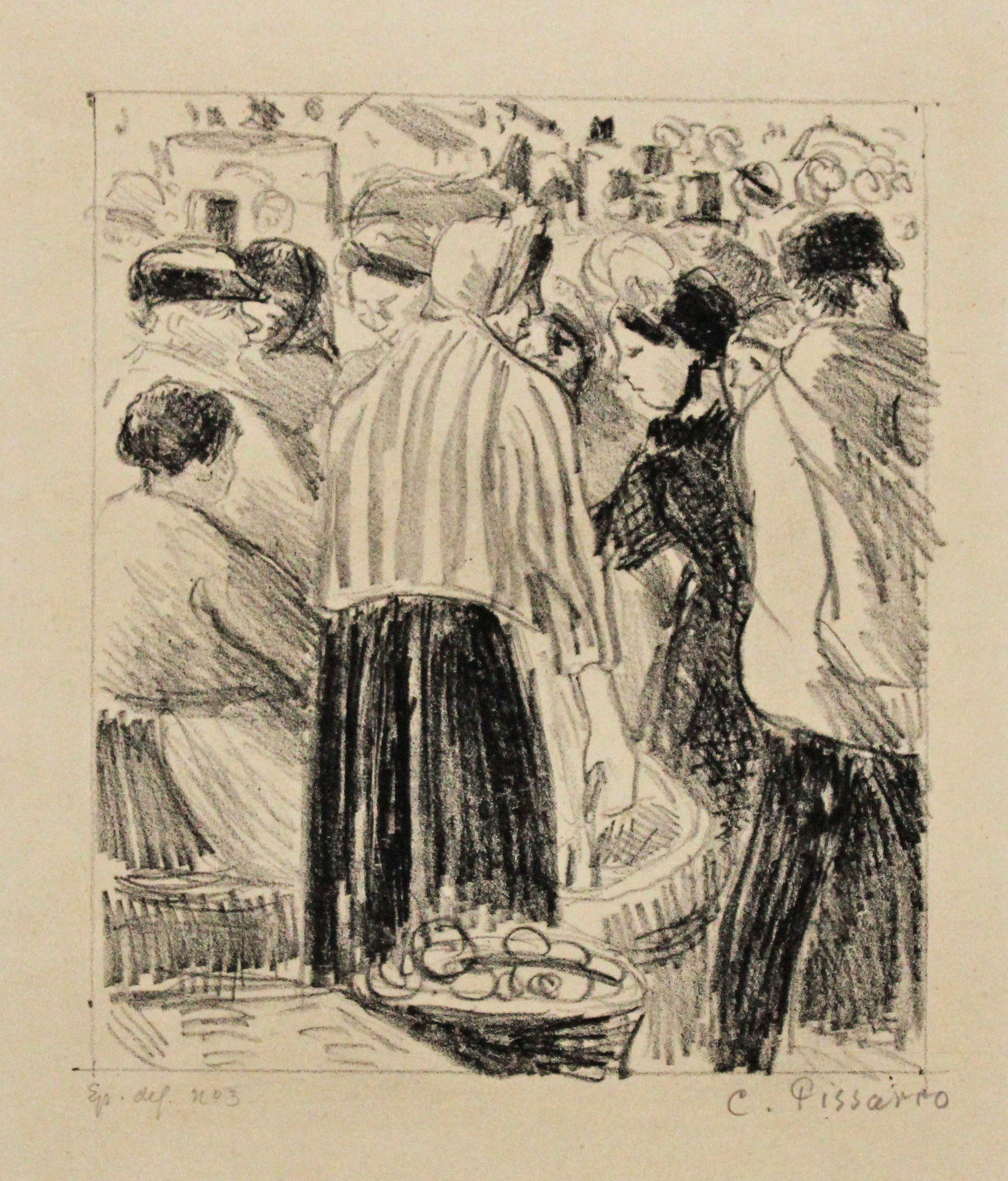Camille Pissarro was born in 1830 on the Island of St. Thomas. At the age of twelve his parents sent him to France for his education. It was at this time that he became interested in drawing and was encouraged to pursue his new pastime by the director of his boarding house. The director, Mr. Savary, taught him to paint from nature and the principles of direct observation. When he turned seventeen he was called back to St. Thomas by his father to learn the family trade business. In his free time Camille continued to draw on any scrap of paper that he could find.
After a five-year period, Camille decided that he would dedicate his life to his art, and against the wishes of his family, he left his home to follow the artist Fritz Melbye to Venezuela. In 1855 he finally convinced his parents that his art would become his life’s work, and he moved to Paris to study. He arrived in time to attend the World’s Fair and observed the international exhibit of paintings by Delacroix, Corot, Courbet and Millet. He was most taken with the works by Corot and set out to meet the artist.
Corot soon became Camille’s advisor and under his tutelage he began to paint in the streets and suburbs of Paris. He attentively watched the changing of the light during the day, as well as the changing of the seasons. It was during this time that he met Monet, Cezanne and Guillaumin. In 1859 he began to show regularly at the Salon des Refuses along with Manet, Fantin-Latour and Whistler, though for years, the style of Impressionism was not fully accepted by the public and art critics. For Pissarro and his contemporaries, this fight against the lack of knowledge and understanding of their work lasted until the early 1890’s. Camille painted in many different parts of France, but he was most intrigued by Osny, Eragny-Bazincourt, and Rouen, places where he lived and spent many of his days enjoying his environment. In the winter, he preferred to paint in Paris and his series of “Pont Neuf” is one of his most celebrated collections of work. Camille Pissarro was dedicated to the mastery of portraying variations in light. He sought to reveal the shimmering instability of landscapes in his paintings.
When creating a piece, Pissarro worked simultaneously on the sky, water, trees and earth, because he felt the eye should not concentrate on one particular spot, but rather absorb everything at once. Pissarro placed the utmost importance upon capturing exactly what he saw in his compositions, imparting on canvas his initial impression of a scene. In order to attain this goal, Pissarro painted freely and without hesitation. In fact, he painted with such clarity and honesty that he often captured the local field workers in his works. Ultimately, they became an integral part of the landscapes that he loved to paint. Throughout his life Pissarro experienced many hardships but, despite his struggle to be recognized as an artist, he taught all of his children to paint. Today, he is considered one of the most important of the Impressionist artists and printmakers and is the first in line of the famous legacy of Pissarro painters, which includes his son Paulémile Pissarro and grandson H. Claude Pissarro.


